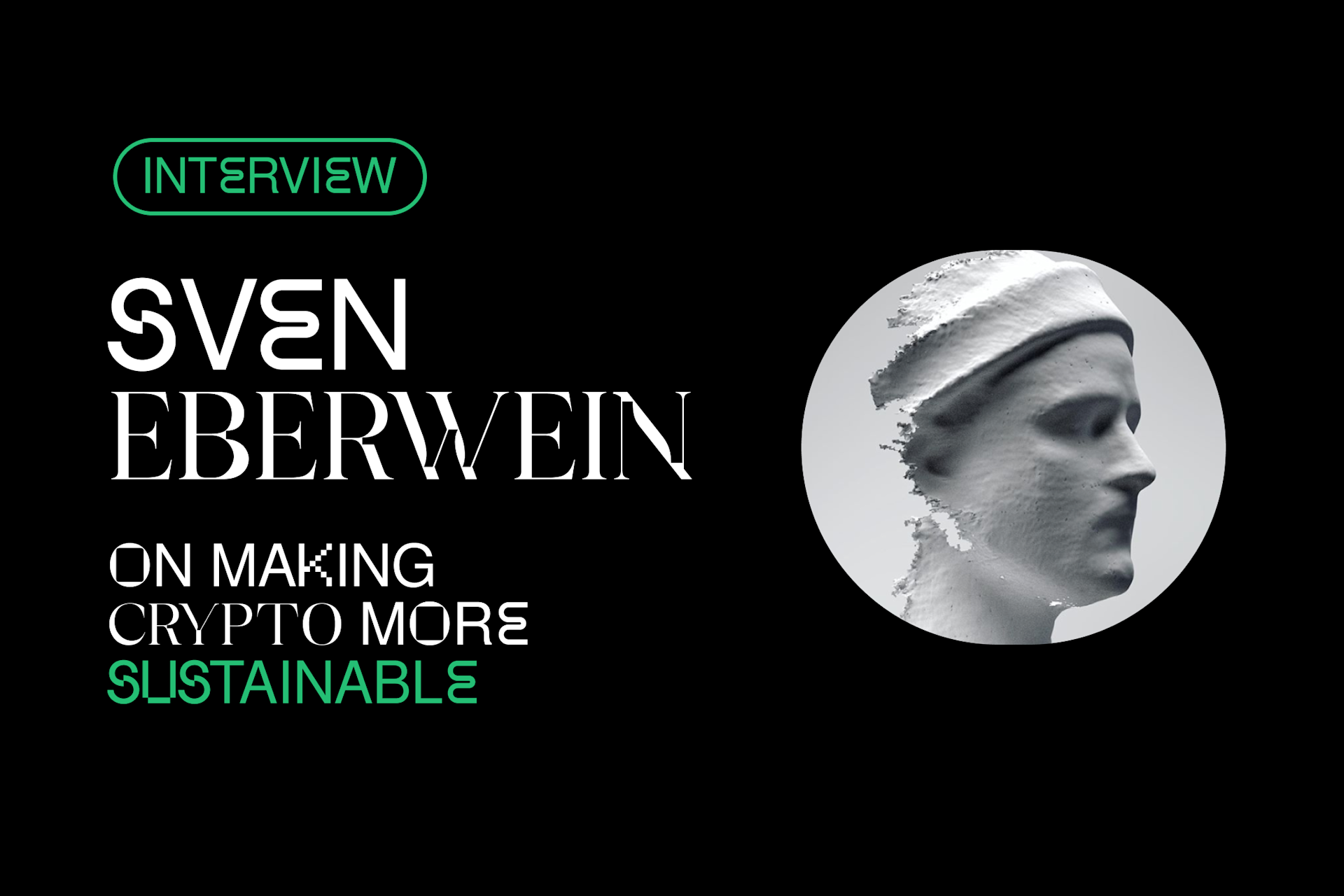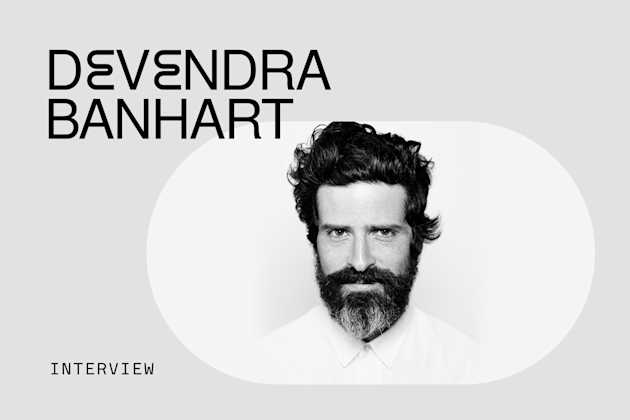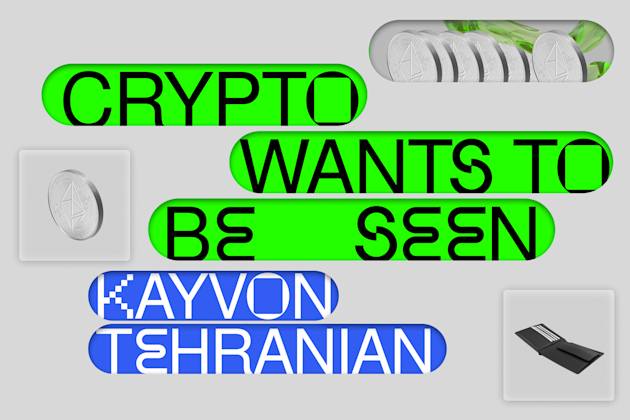Sven Eberwein on making crypto more environmentally sustainable.

Sven Eberwein makes crypto art. As a pioneering artist, he recognizes NFTs as a promising new innovation, and he wants to be among the first to test the limits of the evolving medium.
Sven was the first creator to drop work with $MEME, a project that lets the crypto community stake tokens in an artist’s liquidity pool to mine NFTs. The project ended up going viral, and catapulted Sven into the middle of a cultural zeitgeist that tapped into both the crypto community’s infatuation with memes, and the skyrocketing NFT market. While it was an exciting time for Sven, the virality of the project impacted him on a deeper level when he began to think about the ecological implications of crypto and, specifically, of the many energy-consuming transactions now tied directly to his NFTs.
In the wake of ongoing conversations around how NFTs can become more eco-conscious, we talked with Sven about a new series he’s dropping soon on Foundation, and why artists are the ones driving the narrative around crypto’s ecological footprint.
What does it mean exactly to embed CO2 offset in your NFTs? What does that do for the environment?
I work with Offsetra, who specializes in facilitating the transaction between carbon capturing or prevention projects and customers who are willing to purchase CO2 offset credits and retire them. They curate and find very high-quality projects, whose carbon emissions they capture and then sell to the market. After I purchase them, they get retired in the Verra registry. By purchasing those credits and retiring them, the carbon is no longer available on the market and the climate-positive projects selected by Offsetra receive capital to continue to grow out their operations and expand their efforts in producing renewable energy.
To integrate this into my work, I put the registry entry into the NFT as a QR code. It’s also important to note that I'm facilitating the whole transaction in the name of the artwork, so the art becomes both a token and the owner of the CO2 offset credit. Once it’s minted on the blockchain, even if you sell the NFT and somebody else owns the work, the token technically owns the CO2. Even the person collecting the NFT couldn’t choose to take out the carbon. Once it's in there, it's in there forever on the blockchain.
Which carbon project did you choose to work with for your pieces on Foundation?
The works on Foundation share the context of energy, with a focus on petrochemical energy in particular. There are two main categories for these projects to support: renewable energy generation and carbon capture via reforestation. The whole tree planting thing is not as good as it sounds unfortunately, which was one of my key findings. However, I think there's a lot of potential in the renewable energy sector because it can be quantified more easily, and that has an immediate impact. If you put a hundred solar panels into the desert, you’ll have energy the very next day, and you don't need to burn fossil fuels to source it.
For these pieces specifically, I’m working with a solar and wind farm project in India. Wind and solar energy reduce the amount of carbon dioxide emissions every year, and any funds that I receive as a result of the sale of the NFT will be distributed to their farm.
One word of caution, though: you need to be careful with selecting a carbon offsetting project because not everything that sounds good is automatically good. You need to do your due diligence, trace the money flow, and make sure that the funds are really being used to grow renewable energy. Offsetra has a very good track record, and all of their projects have been vetted and audited, which is why I partnered with them for these artworks.
How did you approach the visuals for these pieces?
We have to care about global warming because time is running out. Scientists are correcting their predictions as they learn that global warming is happening way faster than they originally thought.
For this series, I was thinking about how NFTs could be self-referential while also interacting with the real world—and its consequences. I chose to address the global petroleum consumption, and the environmental price we’re paying for it.
Every time the clock ticks in “Scarce Resources #01 - One Second of Petroleum,” 484 tonnes of carbon are entering the atmosphere from fossil fuels. Once you experience how quick that is and see that the work costs 1.1 ETH (which is currently around a thousand USD), it’s suddenly clear how the hypothetical environmental price that petrochemical emissions cost every second when put into context of an equivalent CO2 offset. If you look at the piece for an entire minute, that's going to be a lot of money. But also, one second is still a second, and there are so many of them in the day.
The piece is intended to be hopeful and inspire people to take action. Ethereum isn’t the only problem—the actual problem is fossil fuels. The technologies and communities that we’re currently forming can be leveraged to provoke change in both the digital and the outside, physical worlds.
Why did you forego taking any revenue from your sales?
Instead of making art about a cause, I’m making art that I can translate into direct support for the cause. For me, it’d be hypocritical to make climate-positive or climate-action-related art and then profit from it. If you sell something as climate-neutral and try to do something good, but then in the end it comes out that you're making a bunch of money from it…that's kind of shit, right?
The other motivation is that, right now, the whole crypto art scene is focusing a lot on how much artists are earning, what collectors are paying, and all of the price discovery. I didn’t want to remove the financial component because that’s what makes it interesting for people right now. But, what if we could leverage some of the incredible amounts of money we’re making in this space, and direct it toward a public good? I believe that I’m one of the first artists in the crypto art space to make this public commitment, at least in the context of CO2.
I like that you are positioning yourself as someone who's moving the space forward. Are there any other creators or projects in the crypto space that are more solution-oriented?
I’m super optimistic about Layer 2 (L2) solutions, proof-of-stake, and Ethereum 2.0, but it’ll take time for them to reach mainstream adoption. In my opinion, L2 presents the most promising opportunity and it’s actually available right now. L2 solutions like xDai do not use proof-of-work and are much less energy intensive. At the end of the day, I think they will be implemented for use cases where you need high transaction counts. Also, NFTs can be bridged from ETH mainnet to L2, and back, so you could technically mint an NFT first on mainnet, then have millions of transactions on L2 with very little emissions. I’m also starting to see more artists who are offsetting their wallets and being public about these decisions. I try to provide positive and creative solutions. I'm not saying any one thing is better than the other, but that's just my approach.
I'm really interested to see what we can accomplish as a community this year.
We need to keep raising concerns so we can all work together on solving them. It can be painful to identify issues, and a lot of people won’t want to hear it—but it's important so we can find and implement solutions. Right now, the crypto ecosystem is mostly made up of technical people and programmers, but for web3 to flourish, you need creative individuals to bring their concerns to the forefront. Programmers built the technical infrastructure and economic framework, but artists also have a tremendously important role to play. Hopefully, if we can include everyone’s voices, we'll end up with a stronger community, and better technology that works for everybody.
Read more

Devendra Banhart on the unfolding possibilities of mixed-media NFTs.

Why collect digital art NFTs?
